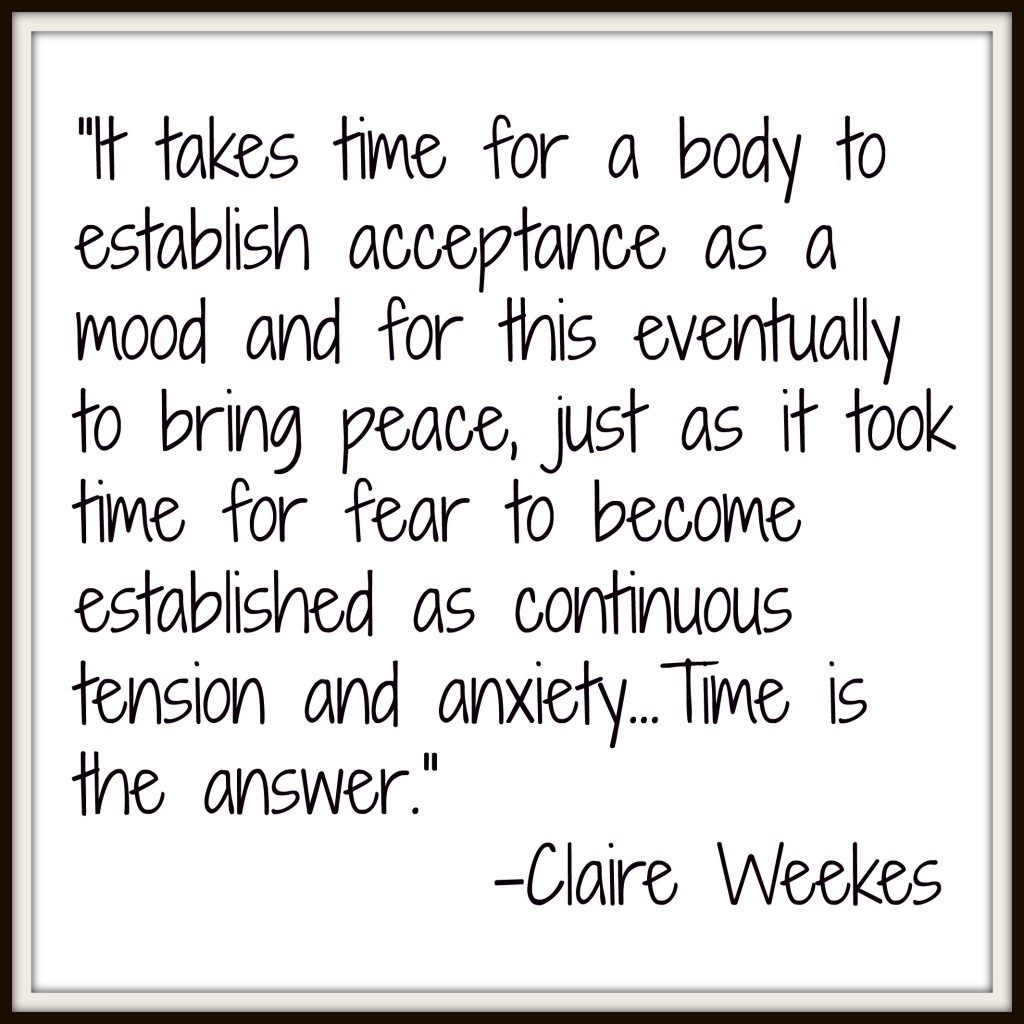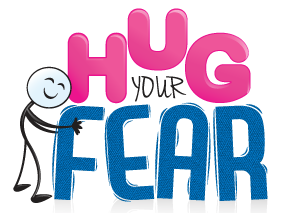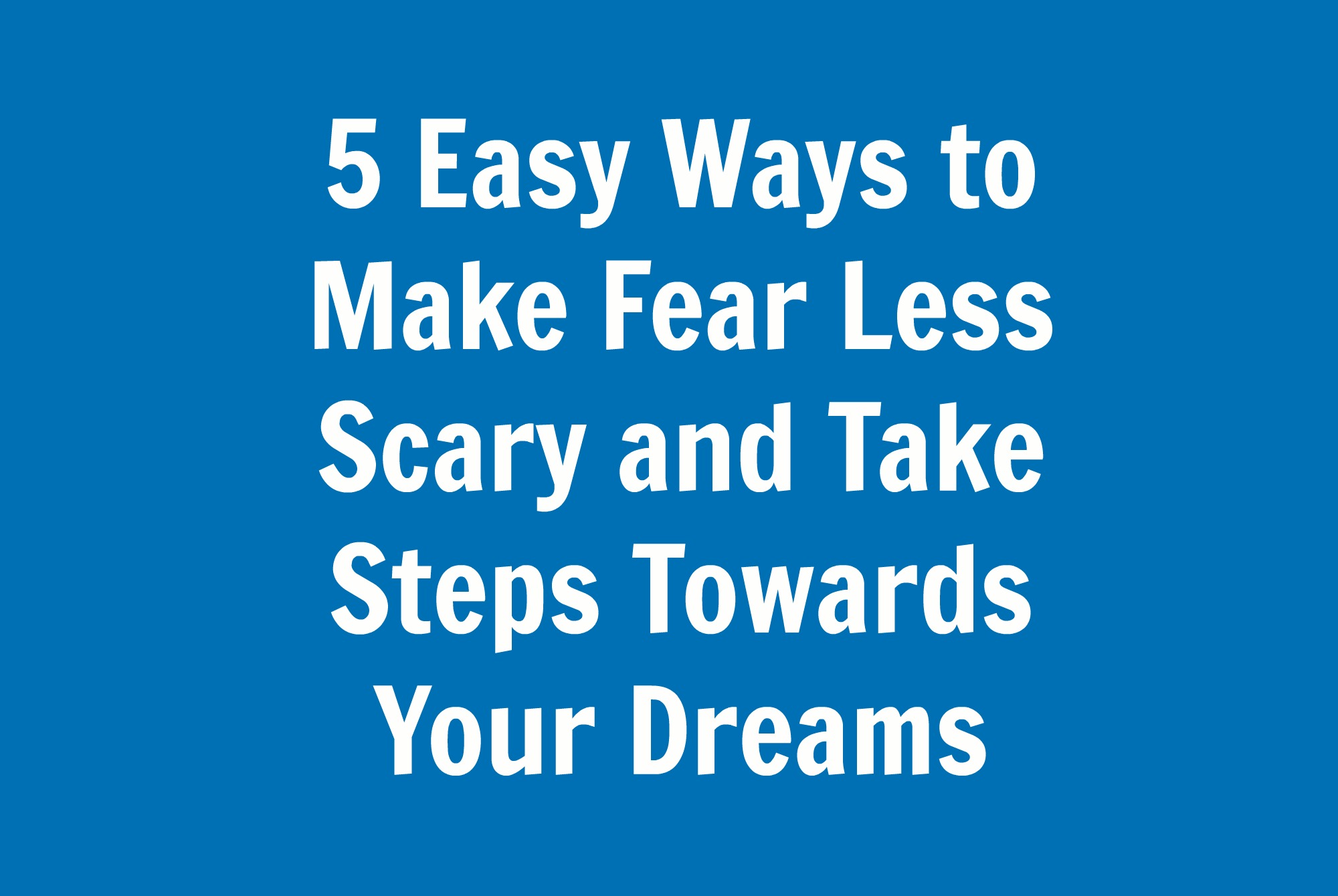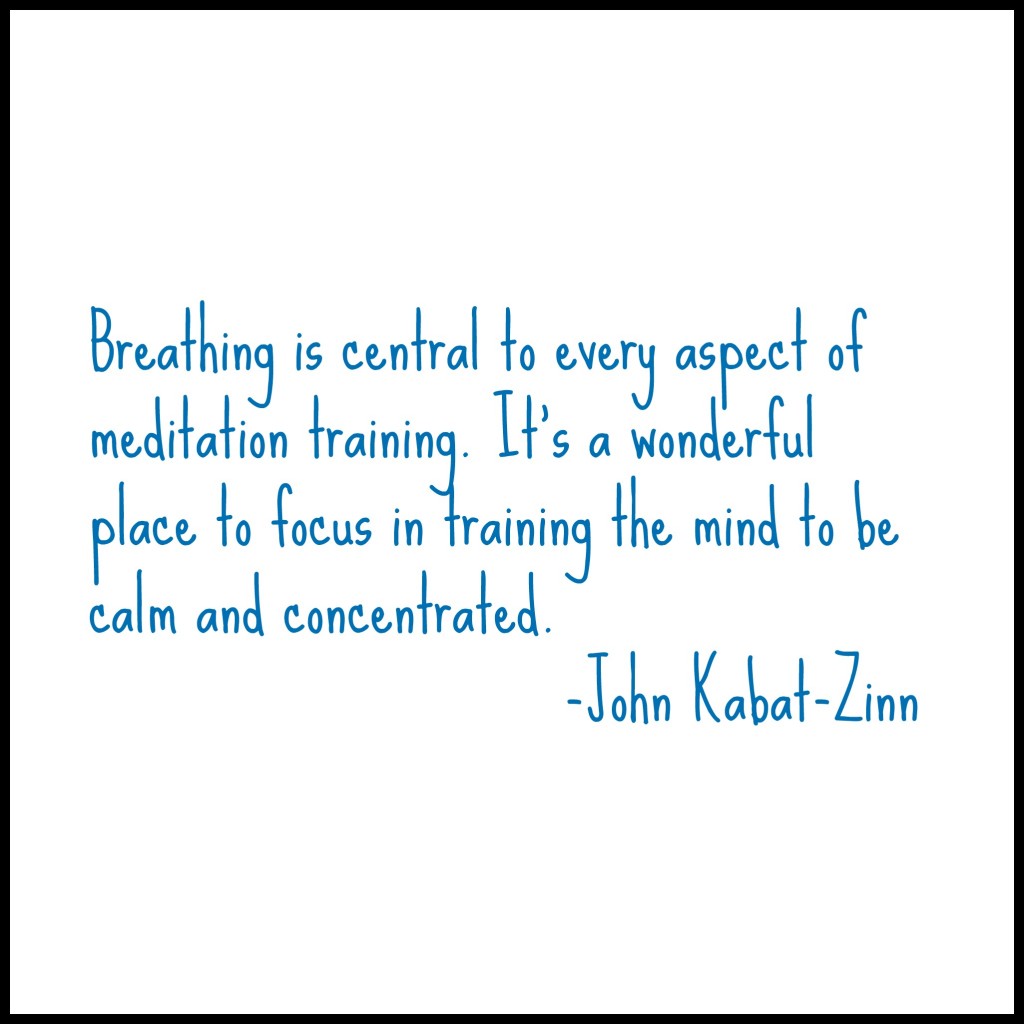Physical responses to fear can be downright scary: an increased heart rate, shaky hands, short breaths, feeling faint, nausea. It can be enough to make you avoid doing the things that make you afraid.
But what if those things are necessary to get you to the life you’ve been dreaming of living?
What if avoiding those things means living a life that you will regret later?
There is an answer, five actually, that I’ve found that can help you make those fear responses less scary and in turn take steps towards the life of your dreams.
Learn what’s happening in your body
I’ve mentioned this book before, but Hope and Health for your Nerves by Dr. Claire Weekes is one of the best resources I’ve found for helping people understand what’s going on in their bodies when they experience fear.
A huge part of fear is of the unknown. Dr. Weekes’ noticed this in her clients, “The great majority of my nervously ill patients have been made ill and kept ill because of the way they feel; because of fear of what they think may happen next.”
Imagination mixed with an increased heart rate can make you feel like you might fall apart. Just know that you won’t and take steps to learn why you won’t.
You might not physically feel better right away, but from personal experience, knowing that what is happening in my body in times of fear is natural and not likely to kill me has helped me to accept it and still take the next step.
Take 10 deep breaths
When you’re in the throes of fear, it’s very likely that you are taking short and shallow breaths. This only makes things worse.
Practice deep breathing.
When I notice that I’m in the middle of letting feelings of fear or anxiety (or any other intense feeling) get the best of me, I say to myself “Ten breaths.” and I stop what I’m doing and take ten deep, slow breaths.
In addition to helping you center yourself and decrease the feelings of fear, taking a deep breath break can also help create some space between what you’re experiencing and what might be a larger perspective that you can’t see without taking a step back.
If you have a habit of breathing more shallowly (as I do) it might be hard to try this at first. One tip I learned was to take a big breath in through your nose (forgetting momentarily about whether it’s deep or not) and then take a big breath out through your mouth. Pretend you’re blowing out a candle until you feel like you’ve blown out all the air in your lungs. Breathe in again through your nose and hopefully you will find that you are breathing more deeply from your belly.
You may have to practice it a bit. Try practicing first, when you are calm. Also note that sometimes you will still feel other scary symptoms while taking deep breaths. Don’t worry, they will pass eventually.
Practice mindful awareness
So how do you stop in the midst of those fearful moments? Practice mindful awareness.
I took an 8-week Mindfulness Based Stress Reduction class based on the teachings of Jon Kabat-Zinn. In that course, I learned about the importance of mindful living, where you practice observing what is going on in your life and in your body without judgment.
This practice mainly involves meditation (which in full honesty, I haven’t done in a while), but I’ve found that creating a little separation within yourself by imagining that there is the you who is experiencing things and another you that is observing things does the trick even if you don’t regularly mediate.
When you are being aware by viewing fearful moments from this “bird’s eye view,” you can notice when you’re getting carried away by fearful symptoms and then take a moment to breathe deeply or do something else to stop the momentum so you can take the steps that once scared you.
Write your feelings
When fearful feelings come up, another way of being aware is to stop and write about what you’re experiencing.
Writing can be very cathartic, especially when you allow yourself to write honestly about how you feel. The act of writing provides some space and perspective and very often helps you to understand why you’re really afraid.
Writing prompts can be very powerful. You begin a sentence and then allow yourself to finish it with whatever comes to mind first, no judgment or self-censorship.
When my heart races in this way, I’m afraid that _________________________________.
If I were being honest with myself, I’m really afraid of _________________________________.
I hate that I feel this way because _________________________________.
If you don’t like to write, recording yourself speaking can be effective as well.
Accept how you feel, but you don’t have to like it
Accepting how you’re feeling can be hard to do. How can you accept things that feel so awful? Have you ever felt that way?
What’s really helped me learn how to accept how I feel when I’m afraid is allowing myself to totally dislike how I feel and sometimes even hate it.
It may be just a simple mind trick, but I’ve found that allowing myself to dislike how it feels when my hands get shaky or my stomach starts to tense up has helped me get to acceptance faster than pretending that I like what’s happening.
Accepting just means don’t fight what comes up, sit with it, acknowledge that it is your current experience, and move forward anyway.

So those are just five easy ways to make fear less scary so that you can do what needs to be done to live a life with no regrets. Do you have any more that you’ve used? Does anyone that I’ve shared sound interesting? I’d love to hear from you. We’re all in this together!
Until next time!
Varonica:)



I also haven’t practiced meditation in a while, but want to get back into a routine. When I meditated I found that I felt more calm throughout the day, so I can definitely see how it would help deal with fear. It also helped me focus, and to sharpen my mind. A good thing because usually I’m pretty scatterbrained.
The practice of creating a separation between the you is experiencing things and another you that is observing things is great way for dealing with a lot of problems. Whenever I get stressed or frustrated I practice this to get some perspective.
We’re on the same wavelength, B.C.! I definitely noticed those things when I meditated, but I have a hard time doing it consistently for more than a few months at a time. That’s why I love the idea of bringing mindfulness to each moment.
And the separation has definitely saved me from myself time and again!
All solid tips as always, Varonica. My tip of late has been simply accepting the fact that I don’t know and I’m uncertain and scared. You talk about this in #5. I notice that when we accept what we are feeling, we can start moving towards a solution. Acceptance means we stop resisting and can then start dealing more rationally with the fear.
Those writing prompts you provided sound powerful – I can’t wait to use them in something that comes up in the future.
Thanks, Vishnu! I am definitely trying to practice your tip a lot lately. I want to know and be sure so and often that gets in the way of the moment.
And please let me know what your experience is if you try the prompts! I’ve really began to use them a lot more and find that they can be very revealing.